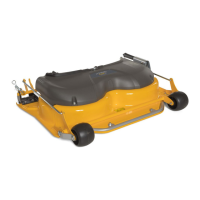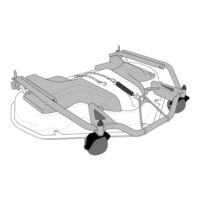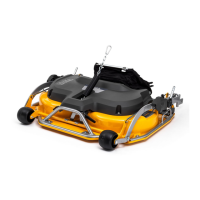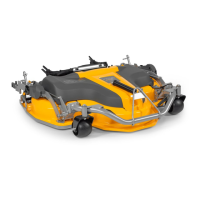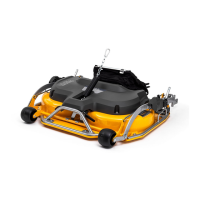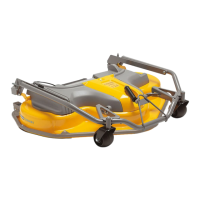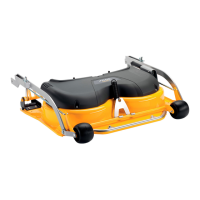sharpening. All operations concerning
sharpening, balancing, assembling
• Regularly check the brakes work properly. It is
important to service the brakes and repair them
if necessary.
• Frequently check the grass collector for wear
and damage.
• Replace any damaged warning and instruction
stickers.
• If the machine has no mechanical stoppers for
transport, accessories must always be resting
on the ground when the machine is parked,
stored or left unattended.
• Store the machine where children cannot get
to it.
-
• Allow the engine to cool before storing in an
enclosed space.
• To reduce the re hazard, keep the engine,
exhaust silencer, battery compartment and fuel
storage area free of grass, leaves, or excessive
grease.
• To reduce the risk of re, regularly check the
machine for oil and/or fuel leaks.
• If the fuel tank has to be drained, this should be
done outdoors and when the engine is cool.
• The ignition key must never be left inserted in
the machine, or where children or persons not
familiar to the machine may reach it. Before any
maintenance or repair, remove the ignition key.
CAUTION! – Battery acid is corrosive.
In the event of mechanical damage or
inhalation or contact with any part of
the body.
-
organs. Seek medical attention imme-
diately.
CAUTION! – Do not overcharge the bat-
acid leaks.
tools, clothing and other materials. Rin-
se away spilled acid immediately with
water.
-
-
-
mediate medical attention.
3.5 TRANSPORTING
CAUTION! - If the machine is transpor-
Load the machine with the engine
-
ople.
deck assy or the accessory, engage the
parking brake and fasten the machine
3.6 ENVIRONMENTAL PROTECTION
• Safeguarding the environment must be a
relevant and priority aspect of machine use, of
benet to the community and the environment
we live in. Avoid being a disturbance to the
neighbourhood.
• Adhere strictly to the local regulations governing
the disposal of packaging, oil, fuel, lters,
damaged parts or any other element which may
have an impact on the environment; this waste
should not be disposed of along with standard
household waste, but must be disposed of
separately and sent to special waste disposal
facilities for handling and recycling.
• Adhere strictly to local regulations governing the
disposal of cuttings.
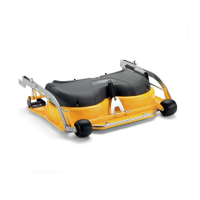
